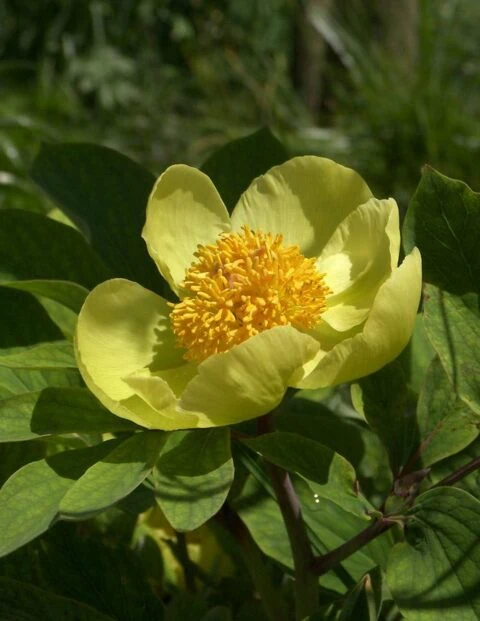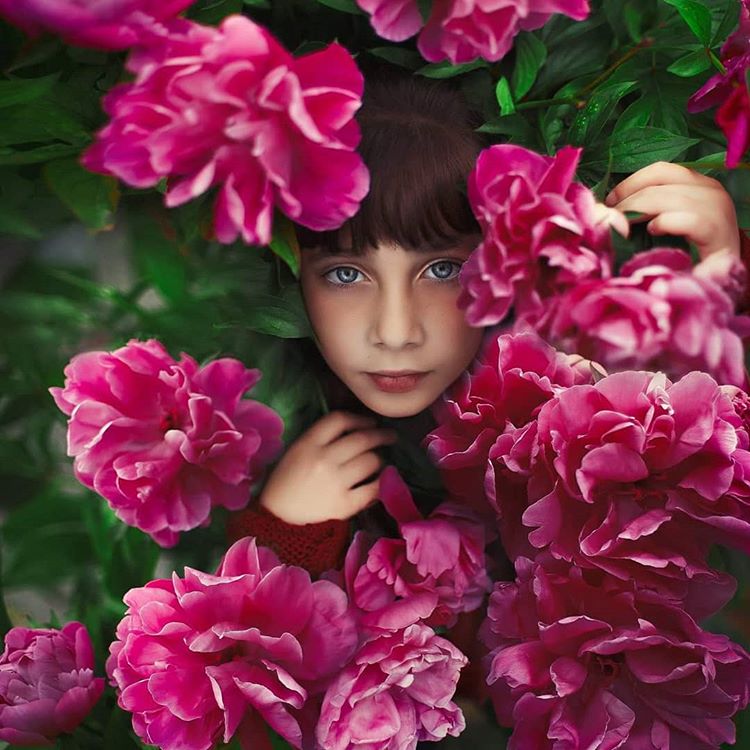Obtaining species peonies, by Galen Burrell.1
Nearly seven years ago I saw my first photograph of Paeonia mlokosewitschii flowering under an apple tree in a book about English gardens. I knew I just had to have this plant. At the time, I had no idea that this one photograph would consequently begin my love for species peonies and would also begin one of the most difficult tasks I have ever undertaken, obtaining authentic species peony plants or seeds.
I started by visiting some of the local nurseries. No luck. Then I went to some of the specialist plant sales that are so common in the Portland area. At the last show of the year I chanced upon five potted plants of what I was sure were Paeonia mlokosewitschii or at least that is what I thought the labels said. Luckily, I was quick enough to rush past a couple of elderly ladies, who were also interested in the peonies, and purchased all five of the little plants. When I got home, and started to plant the peonies, one of the labels fell out much to my surprise and chagrin the label read Paeonia mlokosewitschii hybrid. I was devastated. I almost threw the plants away but I am lucky that I didn’t. Over the last six years they have proven to be some of the most beautiful hybrid peonies that I have ever grown, but that’s a different story. (By asking a lot of questions and by doing a great deal of my own research I was able to find the parents of these plants, which were in no way as beautiful as their progeny. It was also interesting to find out that none of their parents were actually Paeonia mlokosewitschii they were also hybrids.)
Next I wrote to the peony nurseries listed in the back of the APS Bulletin. One actually did have a couple of plants of Paeonia mlokosewitschii but they were not for sale. I was amazed that no nursery in the United States seemed to grow or sell this beautiful peony. (Today at least two peony nurseries sell Paeonia mlokosewitschii.) It was even more amazing to find that only a couple of species peonies at all were being sold by nurseries in the United States and that these plants were questionable as to their authenticity. At that time I decided if I ever succeeded in obtaining species peonies I would start a nursery that grew and sold authentic species peonies.
I decided to try a different tactic. I obtained a list of botanical gardens from around the world from a fellow American Peony Society member. Luckily, I was naive enough to think that they would actually send me seed of species peonies, and I sent off a bunch of letters with international reply-paid coupons. Most of the gardens never did reply, some said that they might have seed the next year, and three or four gardens actually sent me a few seeds which I was extremely excited to receive. Obtaining these seeds led to 2-3 years of germination experimentation, with, and I must admit, a lot of failures. Even today, I have a lot of unanswered questions about peony seed germination.
At the time I got the list of botanical gardens, I also received the names of a few seed catalogs that supposedly sold species peony seeds. It turned out that some of them actually did sell peony species seed, but most no longer did. To make a long story short, out of ten packets of seeds that I purchased from one seed dealer only seeds from two of the packets ever germinated. The rest rotted. (As far as I know there is only one reputable source for species peony seeds, that is Jim and Jenny Archibald. Their April 1995 seed list includes P. caucasica, P. peregrina, P. steveniana, P. cambessedesii, P. lactiflora, P. obovata, and P. veitchii var. woodwardii. Their catalog is free.)(Editor’s note: the Archibald nursery no longer exists.)
At the same time I also decided to write to all of the European nurseries selling peonies to see if they sold species. I found a few that sold species. But in order to place an order I had to apply for a plant importation permit from the Department of Agriculture. I also had to pay some pretty high fees to the nurseries so that they would ship to the U.S. It turns out that the nurseries with the best species lists would not even consider shipping plants to the U.S. I obtained plants from three European nurseries in this manner but a number of mistakes were made in my orders and there was no real way for me to return the plants. I was stuck with some expensive peonies that I did not want. Surprisingly, all of the plants that I ordered did survive.
After I received a few plants I came to realize that I had no idea if I had actually obtained true species or hybrids. I had no key to the species and subspecies of wild peonies or complete descriptions of each of the species. I needed to obtain a copy of A Study of the Genus Paeonia, by F. C. Stern, which was published in 1946. It turns out that this book had long been out of print but after a great deal of searching, I was able to find a copy through interlibrary loan. (Since I received my copy by Stern, I have spent untold hours reading other papers on species peony taxonomy. It’s amazing to me now just how long it took me to remember the scientific names of each of the species.)
The most rewarding part of my search has been the friends that I have made who also love species peonies. Out of the many people that I have written to there have been four or five people without whose help I would have never been successful in obtaining the plants that I now have growing in my garden. For example, a gardener in Germany sent me 13 true species plants from my first letter to him. He didn’t even know me. These plants have now all bloomed and have been invaluable in helping me learn cultivation techniques for species and in learning the different characteristics for telling each species apart.
I think by now you have some idea of the difficulty in obtaining authentic species peony seeds and plants. What has made all the effort worthwhile for me has been learning that each species and sub species of wild peony, not just Paeonia mlokosewitschii, is extremely beautiful and that it is possible for me to grow all of the wild species and subspecies in my garden.
So you are probably wondering if I ever did obtain Paeonia mlokosewitschii? The answer is that I now have nearly 70 plants of “mloko,” and most amazing of all, I have 30 wild seedlings from seed collected in the Caucasus Mountains.
Footnotes:
- Burrell, Galen. “Obtaining species peonies.” In: American Peony Society Bulletin, 1995, no 294, June, pp. 33-32.[↩]

















